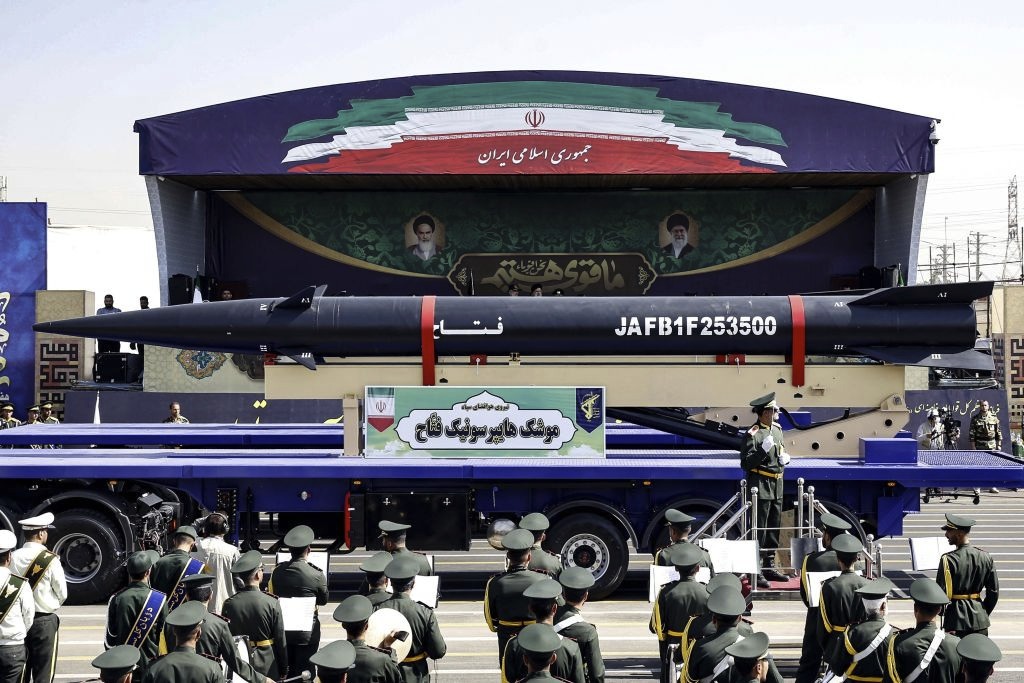Why Now? The Syrian Refugee Flow to Europe
November 2, 2015
Neighboring countries present dangers, privations, and complications not present in Europe, and after hearing about these problems or experiencing them firsthand, many desperate Syrians have decided to head for the continent.
Syria’s civil war has been underway for several years, and millions of its people have become refugees over that period, with millions more internally displaced. Yet mass refugee flows to Europe were not seen until recently. Explaining this trend requires a closer look at the circumstances that refugees have faced inside Syria and neighboring countries before they turned to Europe.
WHY SYRIANS FLEE
The great majority of Syrians fleeing their homes leave because of regime attacks. Over the past month alone, figures from the Office of the UN High Commissioner for Refugees (UNHCR) show that increased fighting in the northwest has displaced around 120,000 people since the Russian intervention began, and these numbers will grow so long as the regime offensive continues. Previously, civilians have sought to flee violence all over the country, such as the bombing of East Aleppo, the destruction of Yarmouk, Bab al-Amr, and other neighborhoods, and the army’s reconquest of al-Qusayr and Yabroud.
The latest Russian/Iranian-backed offensive has exacerbated the deteriorating economic situation and further quashed hopes for a quick end to the conflict. In particular, the Russians have targeted efforts to restore normalcy in rebel-held areas. With markets, schools, and hospitals being destroyed, the new offensive is a clear application of Moscow’s repressive counterinsurgency strategy in Chechnya. Vladimir Putin is not out to win hearts.
Most of the refugees have lost hope of seeing peace in Syria, but even if they wanted to return, many of them are prohibited from doing so by the regime. For instance, all people from Bab al-Amr, a Sunni Arab rebel stronghold in the city of Homs, are now on a regime blacklist, and they would expect no mercy if they or their families attempted to return.
To be sure, the imposition of supposed “Islamic law” by ISIS has pushed secularist Sunnis and religious minorities out of certain areas. On the whole, however, the jihadist group forbids Sunni Arabs from leaving the areas it controls, so relatively few of the refugees bound for Europe were pushed out by ISIS.
Bashar al-Assad is happy to see the refugees leave, in large part because the departure of millions of Sunni Arabs increases the demographic weight of his minority Alawite community. This development reverses the trend seen in the past few decades, when fertility rates fell among the more prosperous Alawite community but remained high among poorer Sunnis. Assad has also openly said that Syria has too many people for its resource base. After 1945, the population began to double every twenty years, and the overall fertility rate did not begin to decrease until the eve of the current war. Even before Assad came to power in 2000, the economy was unable to provide enough jobs, and the gap between youth aspirations and market realities increased dramatically in the ten years prior to the war, leaving millions of Syrians with huge socioeconomic frustration and a strong desire to leave the country.


Despite its tragedies, then, the war has given many Syrians the opportunity to realize their dream. Even in relatively peaceful areas, poor economic conditions and fear of violence have spurred residents to sell their homes and cars and use the money to reach Turkey legally from Lebanon (e.g., by plane from Beirut or by ferry from Tripoli). Even Lebanese and Iraqi emigrants have taken advantage of the conflict by posing as Syrian refugees, buying false Syrian passports in Turkey for as little as $1,000.
Syrian Christians are in a special situation. Many have been fleeing attacks by ISIS or rebel groups, not the regime. In Aleppo, rebel rocket fire drove half the population from the Armenian Christian neighborhood of Nor Kiugh. Although some individuals from these and other rebel-held areas have fled to regime-controlled territory, half of the 1.2 million prewar Christian population seems to have left Syria. With an above-average educational level and a strong network abroad, they are more likely than other communities to leave the country. Moreover, they do not have mountain refuges like the Alawites and Druze, nor cantons in which to build a statelet like the Kurds. Lebanon is no longer a refuge for them either; in fact, many of them have lost hope of their children finding a future in the Middle East. Continuing a century-old pattern, Christians are leaving the region for the West.
WHY SYRIANS LEAVE NEIGHBORING COUNTRIES
In general, Syrians cannot be integrated in saturated neighboring countries, and they are unwelcome in the Gulf states. International aid will never be enough to give them a dignified standard of living next door, and there is a high risk of radicalization among the lost generation of teenage refugees.

In Lebanon, most of the 1.5 million Syrian refugees are in a desperate position. There is no refugee camp in which they can access crucial services, and three-quarters of them are living in unacceptable conditions according to UNHCR standards. Technically, healthcare should be free for them in public hospitals because the UN subsidizes it, but in practice they cannot use medical services without paying bribes/tips (baksheesh). Moreover, Lebanese officials and parents generally do not want to open the educational system to Syrians: only about 30 percent of refugee children currently go to school. Every Syrian over fourteen years of age must also pay at least $360 a year for a resident card, up from $200 in 2014; without this card, they can be put in jail for forty days. And the Lebanese job market is depressed, so those refugees who are able to find employment are often working only for food. In addition, refugees who cooperated with the opposition are under constant threat of being sent back to Syria; many are afraid of Hezbollah and Lebanese security forces, which often regard them as potential supporters of ISIS or al-Qaeda affiliate Jabhat al-Nusra.
Turkey offers free health coverage to refugees, as well as camps that can hold some 200,000 of them, but the number of Syrians who have entered the country (2 million) already dwarfs that figure. And unlike in Lebanon, the language barrier is a major problem: most qualified Syrians cannot work unless they speak Turkish, and access to education is difficult (only one third of refugee children go to school there). Slowly but surely, many refugees are moving from the border camp areas into western Turkey as they lose hope of returning home anytime soon.
The refugee situation has also deteriorated in Egypt and the Kurdistan Regional Government (KRG) in Iraq. Most of the 130,000 refugees in Egypt belonged to Syria’s middle class; only 30,000 of them are considered “vulnerable” by the UNHCR. The government of deposed president Mohamed Morsi welcomed them, but President Abdul Fattah al-Sisi’s administration is very suspicious of them. Their numbers have decreased somewhat since summer 2014 as some have tried to reach Europe by Libya or Morocco. In northern Iraq, nearly all of the 250,000 refugees hail from Syria’s Kurdish cantons or Damascus. Although they once found jobs in the KRG easily, the local financial crisis has meant far fewer opportunities since January 2014.
Jordan is probably the best neighboring country for Syrians. Integration is facilitated by the common language and efficient Jordanian administration: for instance, 80 percent of refugee children attend school. The large Zaatari camp holds 80,000 residents, while the other 82.5 percent of the refugees are living in host communities. Yet there are problems for Syrians even in Jordan. The country has bad memories of the 1970 civil war instigated by Palestinian refugees, and it does not want the new refugees to go down the same path. A more practical source of tension is employment. According to a February 2015 UNHCR survey, only 1 percent of refugee households had a member with a Jordanian work permit; most of them work informally for low wages and are perceived as competitors by the locals. In addition, after Amman closed the border in July 2014 and restricted the entry of new Syrian refugees, authorities began drastically restricting their freedom of movement inside the kingdom due to their sheer numbers, as well as widespread fears of terrorist reprisals by ISIS supporters. For example, Syrians who leave their camps illegally can no longer obtain an asylum seeker certificate.
THE ATTRACTION OF EUROPE
Clearly, then, settling in neighboring countries is complicated and undesirable compared to the European standard of living, and after hearing about these problems or experiencing them firsthand, many Syrians have decided to head for the continent. Like most refugees, they simply want good healthcare and education, and they are more than willing to work, but they face barriers to all of these endeavors in neighboring states. They realize that European societies have their own barriers to integration, but they have high hopes for the ample transition aid provided to refugees. Europe’s family reunion policy is another advantage, allowing vulnerable individuals to avoid the dangers of initial escape. For example, a father can make the journey alone, obtain a resident card, then apply for reunion with his wife, children, and parents.
Unfortunately, Syria has become like a cancer left untreated for too long. Even in the unlikely event that the regime defeats all of its opponents, the subsequent repression, ethnic cleansing, and economic crisis would still generate strong emigration to Europe. Similarly, victory by the radical opposition would generate a wave of migration by Syrian minorities. In short, the refugee flow to Europe will continue as long as the situation appears hopeless for so many people inside Syria, and as long as the international community and most neighboring countries do so little to make life bearable for them.
Fabrice Balanche, an associate professor and research director at the University of Lyon 2, is a visiting fellow at The Washington Institute.

























